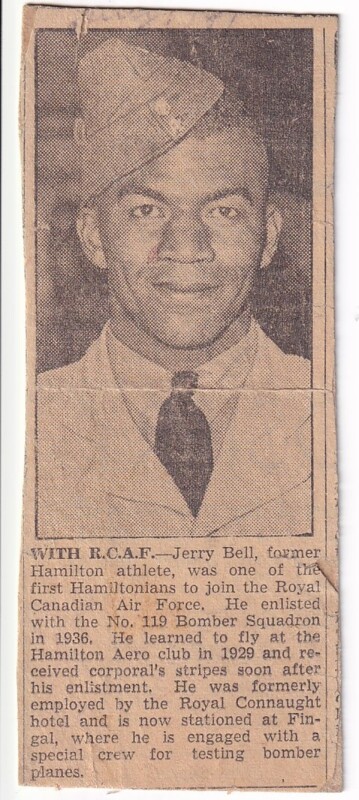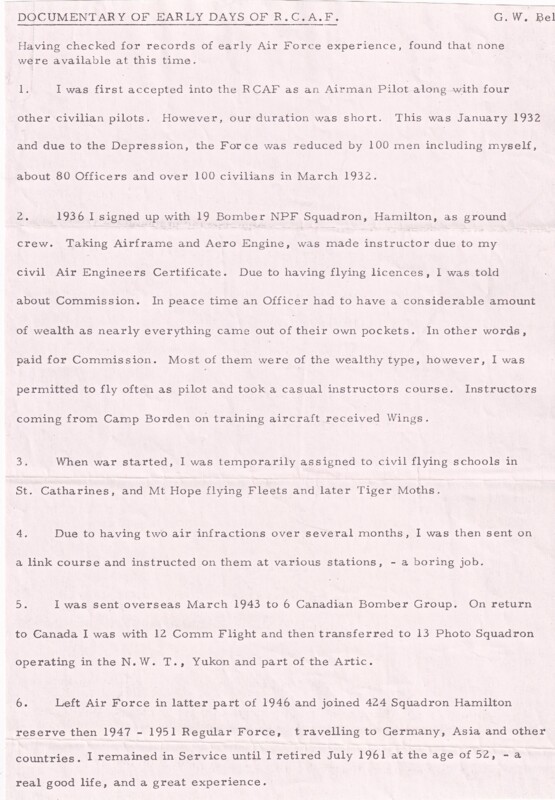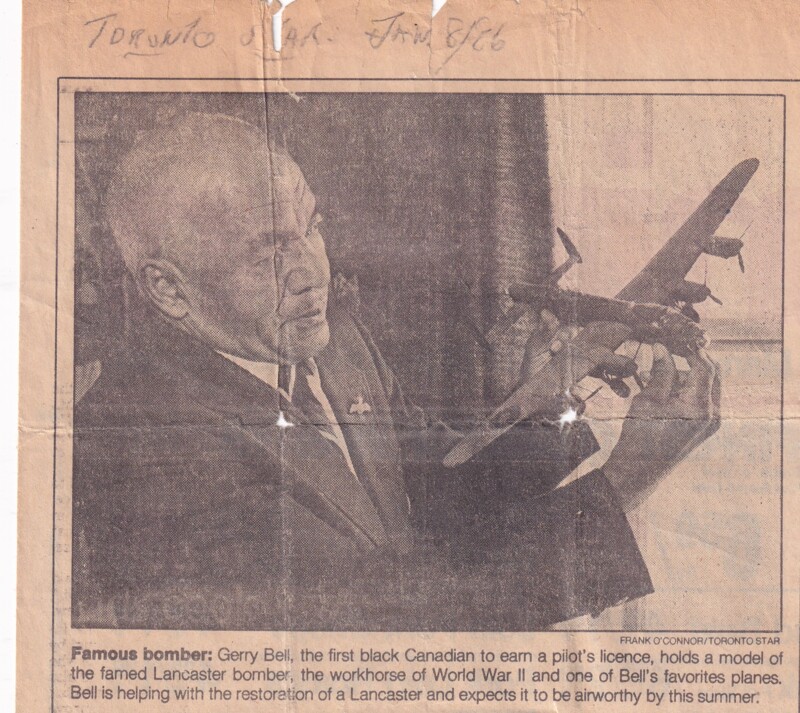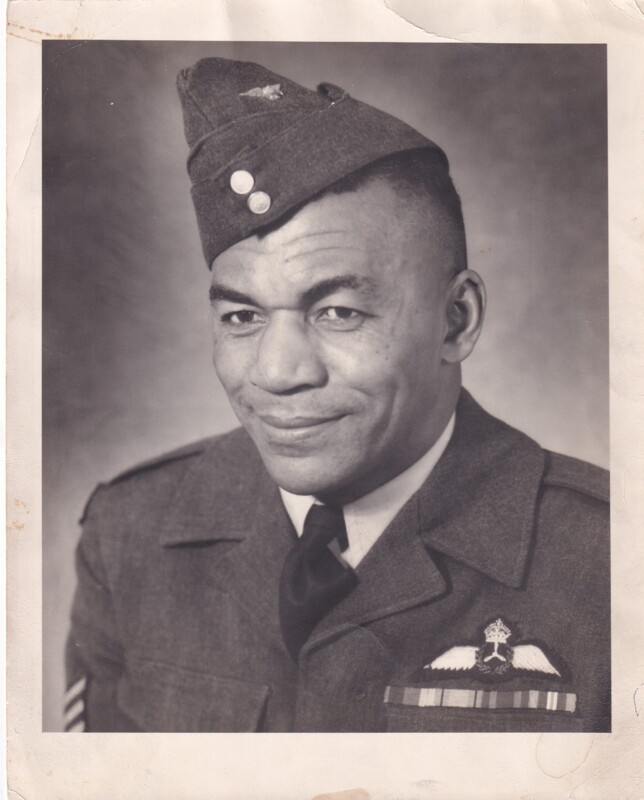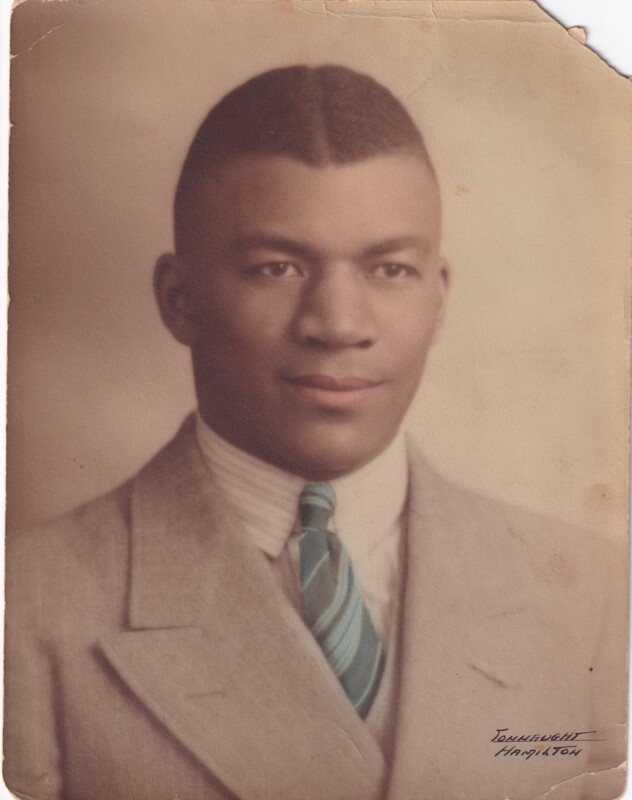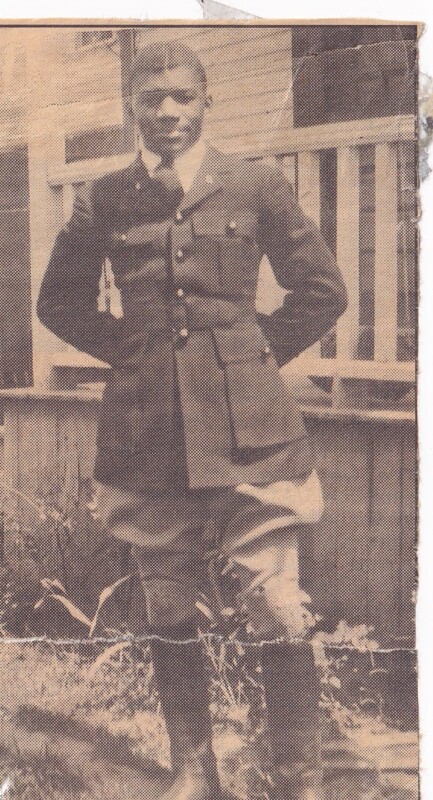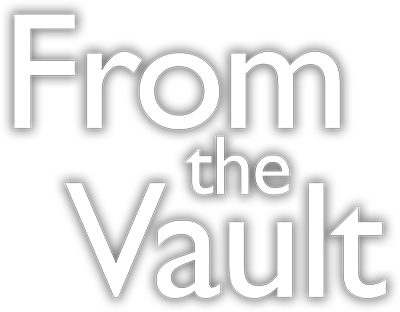Gerald "Gerry" William Alexander Bell
b. February 17 1909 in Rochester, New York, U.S.A.
d. January 17 1989, Trenton, Ontario, Canada.
Gerry as he was known to his friends was raised in Hamilton, Ontario. The son of a First World War veteran and foreman at National Steele Car Ltd, Gerry was a superb athlete who was studying medicine at Western University. While at home one afternoon “this old biplane came whooshing over and landed in a nearby field.” And from that point on, his interest in flying began. Gerry quickly scraped together $10 and bought two flights at the Hamilton Aero Club. It was 1929 and Gerry decided to leave university to become a pilot. By December of that year he had accomplished his goal, while at the same time becoming Canada's first licensed black pilot. Gerry also obtained his A and B Air Engineers Certificate.
Gerry focused on his athletic training and coaching. Gerry was regarded as one of Canada's top amateur boxers and track athlete, fighting in the preliminaries at major events in the Buffalo, Cleveland and Detroit circuit and attained a record of 63 fights and only four losses before an eye injury cancelled his chances in a light weight career. Gerry was also a member of the Hamilton Olympic Club, and ran 100 and 200 yard sprints.
In June 1936 Gerry was accepted into the air force with 19 (Bomber) Squadron (Auxiliary).
At the outbreak of World War Two, the Squadron became active and Gerry was reassigned to various schools across Canada under the British Commonwealth Air Training Plan. Gerry would also serve overseas at a Heavy Conversion Unit, and volunteer for the war with Japan.
By war’s end Gerry also did some short stints in the Northwest Territories with No. 12 Comm Flight and No. 13 Photo Squadrons.
In 1947, Gerry joined the 424 "City of Hamilton" Squadron (Auxiliary), and later transferred to regular force in 1951. Over the next four years Gerry served overseas in Germany. In 1961 Gerry retired from the R.C.A.F. at the age of 52.
Gerry continued to fly until 1966. At this time he became a quality control inspector for de Havilland and SPAR Aerospace. Retiring for a second time in 1974 Gerry ended a 45 year career in Canadian aviation, 25 of those with the R.C.A.F.
In retirement Gerry kept himself in peak physical shape and remained involved with various air force associations and was even an avid supporter of the CWH Lancaster Restoration. He was a person who didn’t consider himself historically significant, he was simply a man who loved to fly.
Gerry passed away of Lou Gehrig’s disease on January 17th, 1989 only a few short months after the CWH Lancaster flew again.
View the photographs, objects and archival documents to learn more of the inspiring story of Gerry Bell.
